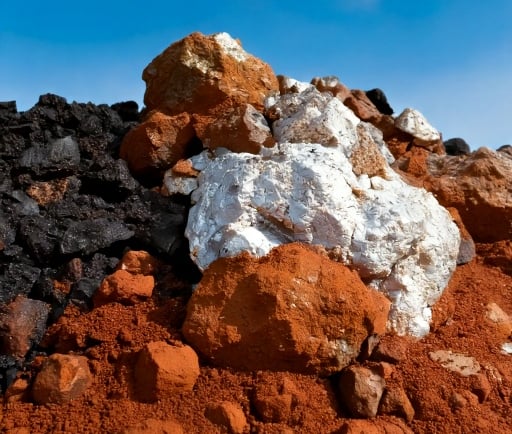The Fascinating Properties of Manganese Oxide and White Hematite Rocks


Introduction to Manganese Oxide and White Hematite
Manganese oxide and white hematite rocks are significant components in geological studies and industrial applications. Manganese, a vital transition metal, is found in various forms, with manganese oxide being one of the most important. In its natural state, it is often associated with iron oxides, specifically with white hematite, which is a less common variant of hematite distinguished by its lighter coloration.
Key Characteristics of Manganese Oxide
Manganese oxide is a compound that occurs in multiple forms, such as MnO, Mn2O3, and MnO2. Each form possesses unique properties that are applicable in various industries. For instance, manganese dioxide (MnO2) is widely used in batteries, whereas manganese(III) oxide (Mn2O3) is primarily utilized in ceramics and glass making. Its capacity to combine with different oxides enhances its appeal for various synthetic and natural processes.
White hematite, on the other hand, displays a softer consistency compared to its more traditional red counterpart. The presence of manganese oxide in mineral formations can impart additional characteristics to white hematite, particularly its magnetic properties and resistance to weathering. The interplay between these compounds creates intriguing opportunities for research and application.
Applications and Significance in Industry
The synergistic relationship between manganese oxide and white hematite rocks extends into diverse industrial sectors. Mining companies often seek deposits rich in these minerals due to their economic value. Manganese oxide, for example, is essential for steel production, as it removes impurities and improves the overall quality of the metal. In contrast, white hematite serves as a pigment, providing a lightweight alternative to traditional iron oxide pigments.
Moreover, the environmental implications of extracting and using these minerals cannot be overlooked. Responsible mining practices are crucial for minimizing ecological damage. Sustainable extraction methods aim to maintain the balance of local ecosystems while still obtaining essential resources like manganese oxide and white hematite.
Conclusion: A Dynamic Duo in Geology
In summary, manganese oxide and white hematite rocks represent a fascinating convergence of geology and industry. Their unique properties and applications make them invaluable in various fields, including materials science, mining, and manufacturing. As research advances, there is potential for new applications and enhancements in existing processes that leverage these minerals—creating a dynamic link between nature's resources and human innovation.
